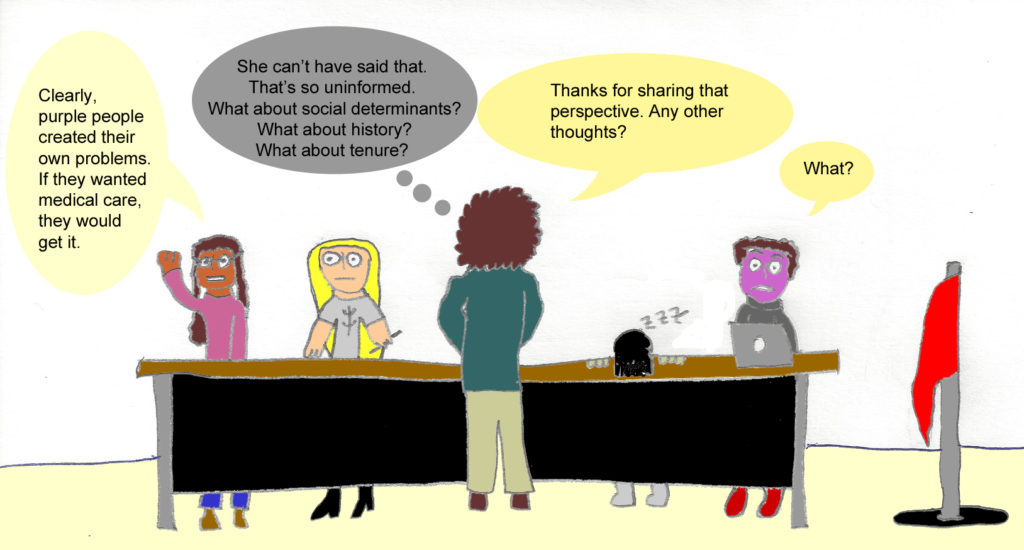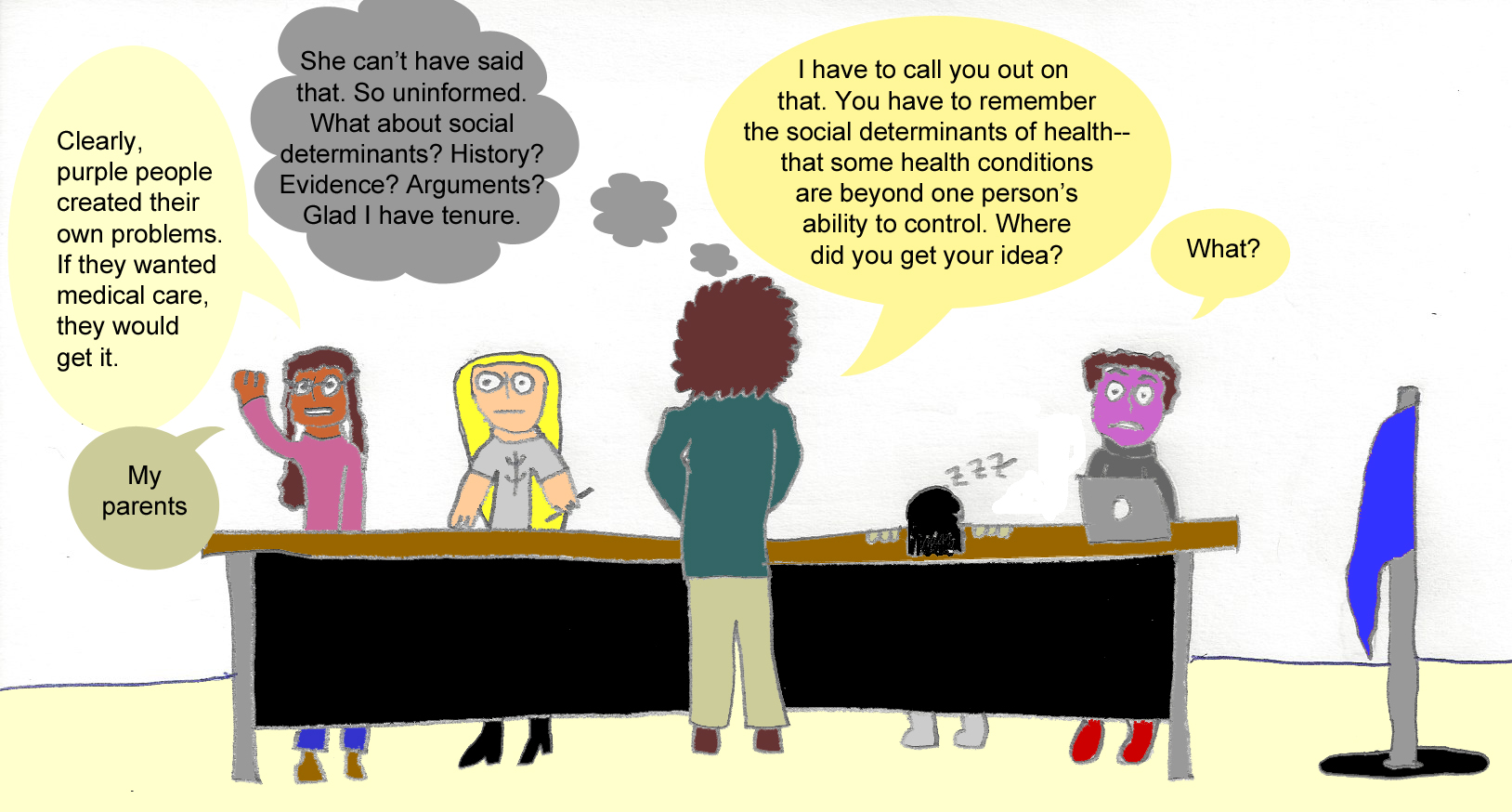by Craig Klugman, Ph.D.
Those of us who teach bioethics and ethics-in-general face a dilemma during every class session: How much of our own perspectives and analyses do we bring to the classroom? Is the role to be a mute facilitator—teaching students the mechanisms of ethical analysis but not judging the results of their conclusions—or to direct them to better arguments that might encourage them to accept our position on an issue? What is the goal of an ethics course: To teach how to think or to teach what to think? If we teach the former, then might students be led naturally to the latter?

I have historically been a strong proponent of the position that we give our students the skills to reason, but that we are nonjudgmental when looking at positions. For example, if discussing abortion in a classroom, it is important that we present several competing viewpoints so as not to influence what our students might believe on the topic. The result of such efforts is that our students gain skills in argumentation, ethical theory, and appreciation for other viewpoints. These are all good outcomes from a class. I even went so far as to conduct a pre/post study of student’s positions on various bioethics topics and what they learned as a result of such a course. My conclusion was that students learned better how to think, not what to think.
I was recently looking through my student evaluations from the 2016-2017 academic year and I notice significantly more comments that a few (a very few) students perceived a bias in my teaching—toward social justice, public health, and a politically liberal perspective. I admit that since the election last November, I have had a harder time not adding comments to some positions. In part, this is because a portion of each class sessions focuses on current news items that students bring into the room. How can one take a neutral position on efforts to strip health insurance from millions of people (there I go again)? Is it possible to represent both sides of an argument equally that are about such things as social justice, torture, harassment? When the Administration chose to allow health insurers to no longer cover contraception, my students were in an uproar. One older student kept asking me, “Why do they want to do this?” I tried to explain a libertarian perspective to her and politically conservative beliefs about the limited role of government, but I am sure those explanations rang as hollow since I do not believe them.
In the original study that I conducted, one of the reviewer’s comments was asking why we do not change people’s opinions on various views. If we are teaching ethical thinking, then shouldn’t that lead students to change their thinking and position on certain topics)? At the time, I thought this was a challenge that I had to tackle in my revisions. However, a decade later I am taking this question to heart.
There are strong reasons to maintain a neutral classroom—one that represents all sides and perspectives. When I started teaching, I was a liberal person living in a (then) Reddish state, so taking a neutral stance was, in part, to protect myself from claims of teaching “fake ethics” and of trying to “convert” students to the “liberal elite” from the “wholesome moral values” they learned in their families. When students took positions that I thought were “wrong,” I did nothing to correct them but simply asked what led them to that conclusion? What was their evidence? What theories supported them? My fear was changing their minds, my hope was that when they looked at the arguments, that they might see the problem (from where I sat) with their position.
Now we are one-year into an Administration that stands against everything that I hold dear and in which I believe, including my equality as a citizen and the basic civil rights of all people. I have had a hard time not letting more of my personal beliefs and feelings leak into the classroom as I see rights scaled back and threats made to the social safety net (yes, I believe there should be one). Often these expressions are not deliberate attacks of certain viewpoints, but small micro-statements: Rolling my eyes when a student offers a news item about health care coverage being rolled back; taking more time to explain the problems with a certain perspective than the reverse; smiling when students present perspectives that support my perspective. These are not always controllable reactions.
I now work at an institution with a social justice mission in a Blue city and state. Shouldn’t I teach my students to prefer positions that support that mission? If a politician talks about health care as a commodity and that there is no right to it, shouldn’t I show them the problems with this argument. If a student walks out of a classroom thinking and believing the same thing as when she or he walked in, then perhaps I have failed in my job. I teach pre-health students: Isn’t part of what I am supposed to do is lead them to not only consider certain ideas but why some arguments are better than others? And of course, the “better” arguments are usually going to be the ones that reflect my position. One could argue that I have a duty to bring students around to thinking in a way that is coherent with our mission.

Certainly, there are positions and points of view that even in the most unbiased, open classroom would be beyond the pale. If a student expressed support that a certain group or population are “not human” or are “second class” citizens, then it is my duty to call them out on it. If a student was in support of views that their subpopulation was superior to all others and that certain groups should not exist/should be enslaved/should not get the same resources and opportunities as others, I feel obligated to explain why they are wrong. Letting them leave an ethics course believing that certain people are inferior to others would demonstrate neglect on my part. The question may be, where is the line? I think most would agree that espousing that one group is superior or that one group should not exist is unacceptable and the student should be taught otherwise. What about the student who says “health care is a commodity and if you can’t afford it, then there’s always the option of dying.” Do I “owe” it to that student to explain my position that health care is a human right by pointing out the studies, evidence, facts, and strong arguments in this direction? Or do I simply challenge him on a few things to makes sure that he has thought about this perspective (rather than holding a position simply because one’s parents said “this is how things are”).
My bias may also come out unintentionally. For example, do I choose to teach ethical theories that uphold certain perspectives over others? I have a section in my intro to bioethics course on public health ethics where we discuss communitarianism, communalism, and utilitarianism. I do not have a section that talks about libertarianism and Randian objectivism. Of course, I teach a course in a public health program, not one in political economy. Even if I “try” to keep bias out of the class, by choosing the topics, theories, and arguments covered, I am indeed interjecting my bias into the classroom. This is a similar complaint made against the media where editors and publishers make decisions about what is “news” and what belongs on the front page.
The danger of being seen as biased is that we may reinforce the ideas of some students that the “liberal elite” is trying to “indoctrinate.” They may believe we are not open to other viewpoints or that they will not be graded as well simply because their position does not agree with ours (although, some of the highest grades I’ve given throughout my career are to students who argued well against my position). The reality is less important here than the perception: The student who feels her views are unwelcome may shut down and not just dismiss the instructor or the class, but the entire idea of ethics.
I am not sure of the answer. Should I offer a bias statement at the beginning of my class? Should my course description indicate that we will explore a certain set of ethical perspectives? As I see greater injustice and intolerance in the world; as I see a break down in civil discourse and a further division into “us” and “them,” I find it harder to keep a neutral stance and not teach that there are indeed positions that a health care provider should not hold. I may owe a duty to a student’s future patients that they are deserving of respectful, compassionate care by someone who embraces an ethical practice of medicine. Or I may want to just stay out “trouble” and not stir the pot. The answer, as in many things in bioethics, is “It depends.”